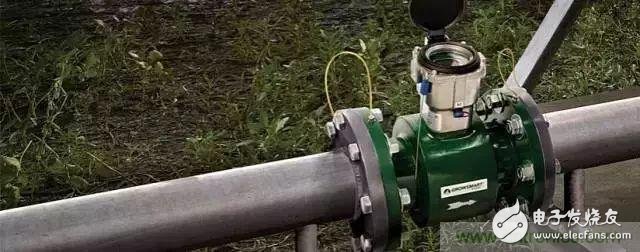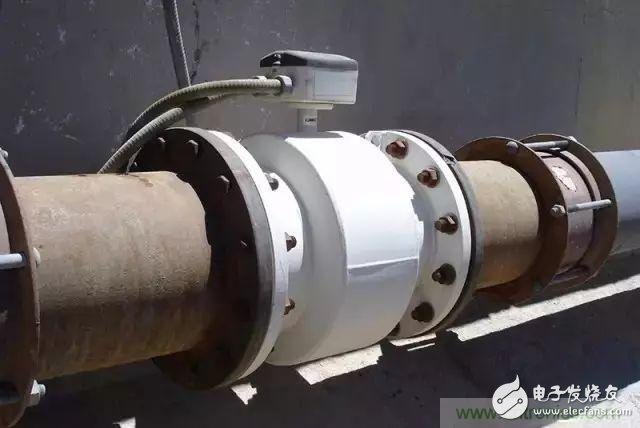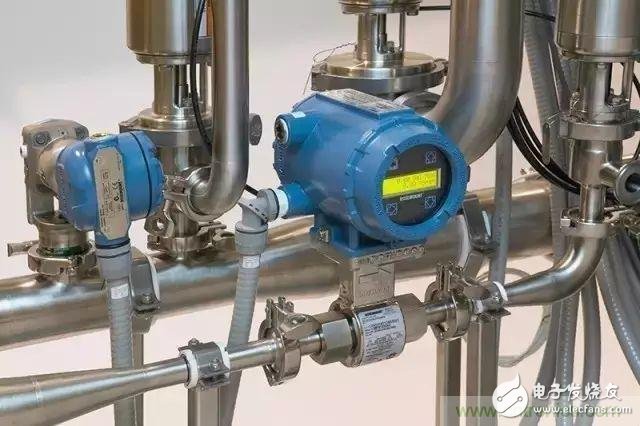In general, the main influencing factors of electromagnetic flowmeter error can be divided into three categories: improper selection, influence of test liquid and interference.
Improper selection
1. The flow rate of the liquid to be tested
The flow rate of the electromagnetic flowmeter can be measured generally in the range of 0.5 to 10 m/s, and the economical flow rate is in the range of 1.5 to 3 m/s. In actual use, the inner diameter of the measuring tube should be determined according to the flow rate to be measured and the flow rate range of the electromagnetic flowmeter.
2. Electrode and lining material selection
The electrode and the lining material are directly in contact with the liquid to be tested. The electrode and the lining material should be selected according to the characteristics of the liquid to be tested (such as corrosiveness, abrasiveness, etc.) and the working temperature. If improperly selected, the adhesion speed, corrosion, and knot will be caused. Problems such as scale, wear, and lining deformation, which in turn cause measurement errors.
3. Excitation stability
The excitation methods of electromagnetic flowmeters include DC excitation, AC sine wave excitation and dual-frequency rectangular wave excitation. DC excitation is prone to electrode polarization and DC interference problems. AC sinusoidal excitation is easy to cause zero point variation, while dual-frequency rectangular wave excitation has both The low-frequency rectangular wave excitation has excellent zero-point stability, and the high-frequency rectangular wave excitation has strong suppression of fluid noise, which is an ideal excitation mode. In practical applications, the stability of the power supply voltage and frequency should be ensured as much as possible to ensure that the magnetic field strength is constant and the measurement error caused by the change of the magnetic field strength is reduced.
4. Mixed phase fluid measurement
When using an electromagnetic flowmeter to measure the flow rate of a liquid-solid mixed phase fluid (such as sediment-containing water), if an electromagnetic flowmeter calibrated by a single-phase liquid is selected, a measurement error will occur, and at this time, it should be selected not to cause a liquid-solid phase. Install the sensor at the separate straight pipe section.
Liquid to be tested
1. The conductivity of the liquid to be tested changes drastically
When the conductivity of the liquid to be tested is large, it will cause large fluctuations in the displayed value. If the problem is very serious, the control system is difficult to achieve normal operation; and when the conductivity of the liquid to be tested is too low, the electrode is difficult to achieve normal output. If the conductivity of the liquid to be tested is below the lower limit in the operation, the electromagnetic flowmeter will not function properly. In view of these situations, first of all, based on actual needs, combined with relevant standards and requirements, the choice of electromagnetic flowmeter type; secondly, install reactor or straight pipe section to ensure the full mixing of materials, promote the smooth realization of chemical reactions; Re-select the flowmeter type.
2. The liquid bubble or non-full tube to be tested
For the bubble, the gas which is mainly dissolved in the liquid develops into a bubble in a free state and a bubble which is taken in from the outside. Flows containing a large volume of bubbles can affect the accuracy of the measurement. If the diameter of the bubble is too large, even exceeding the value of the electrode diameter, an unstable state will occur during the measurement display, and the fluctuation cannot be avoided. In view of this situation, first, the gas collector can be installed on the electromagnetic flowmeter, and the exhaust operation is performed according to the cycle; secondly, the installation position is reasonably replaced; again, the vertical pipe is installed on the electromagnetic flowmeter, and the protection is guaranteed from the bottom. The direction of the upper direction; fourth, when installing the sensor, avoid too close to the discharge port; fifth, install the sensor at the control valve position, in its upstream position, or downstream of the pump.
3. The conductivity of the liquid to be tested is too low
The decrease of the conductivity of the measured liquid increases the output impedance of the electrode, and the measurement error occurs due to the load effect caused by the input impedance of the converter. If the actual conductivity is lower than the lower limit, the instrument will not work normally and the indication will fluctuate. Countermeasures: Select other low-conductivity electromagnetic flowmeters that meet the requirements, such as capacitive electromagnetic flowmeters; use other principle flowmeters, such as orifice plates.
4. Measuring the liquid in an asymmetrical state
In the measurement, the liquid to be tested is asymmetric, and there are mainly two kinds of flow combinations: one is a single vortex flow; the other is a linear flow along the pipeline axis, and the volume flow of the liquid is the integral of the pipeline cross section. For the shortage of the upstream straight pipe section, the flow regulator can be used for adjustment; secondly, the inner diameter of the pipe within the reasonable range of the upstream and downstream is guaranteed to have the same value as the inner diameter of the flowmeter; again, sufficient straight pipe section is reserved for the upstream.
5. The measuring tube is in the layer
Electromagnetic flow meters are commonly used to measure non-clean fluids. The non-cleaning fluid contains some substances such as sediment inside, which causes the surface of the electrode of the electromagnetic flowmeter or the pipeline to be contaminated, resulting in measurement error. In response to this situation, firstly, the electromagnetic flowmeter is cleaned regularly; secondly, the flow rate is reasonably raised, and it is controlled to a state of 4 m/s; again, a lining of a material such as polytetrachloroethylene is applied.
Interference effect
Space electromagnetic interference
The cable between the converter and the sensor is long. In a strong electromagnetic environment, it is very susceptible to interference, which causes the measured value of the instrument to be non-linear and difficult to display normally. In view of this situation, firstly, the introduction of shielding measures can be carried out in the grounded steel pipe to separate the cable and use the shielded cable up to standard; secondly, the cable length is reasonably shortened; again, it is kept at a long distance from the strong magnetic field.
2. Connection cable problem
The essence of electromagnetic flow application is to realize the connection between the converter and the sensor by means of a specific cable to form a complete system, so the cross-sectional area of ​​the conductor, the capacitance, the cable field and the like may have adverse effects. In view of this situation, first of all, to ensure that the cable model meets the requirements, the effective connection of the end is realized to prevent the occurrence of the intermediate joint phenomenon; secondly, the control length range is generally as short as possible.
3. Grounding problem
Since the output signal of the sensor is very small, usually only a few millivolts, in order to improve the anti-interference ability, the zero potential of the sensor must be reliably grounded separately, and the ground point of the sensor output signal should be electrically connected to the fluid to be measured. The grounding resistance of the sensor should be less than 10Ω. When the insulation is applied to the pipe connecting the sensor or the non-metallic pipe is used, the grounding ring should be installed on both sides of the sensor and grounded reliably to ground the fluid. The fluid potential is the same as the ground potential.
4. Electrode and excitation coil symmetrical point mounting point vibration
The excitation coil and the electrode of the electromagnetic flowmeter should be symmetrical. Once asymmetrical, the deviation during the production process will be triggered, and the measurement result is difficult to ensure accuracy. In addition, the installation site needs to achieve a high anti-vibration standard, otherwise the accuracy of the measurement value cannot be guaranteed, and even the abnormal operation of the instrument is induced.
Acetate-Metal Glasses,Acetate Frames,Acetate Material Glasses,Square Acetate Sunglasses
Danyang Hengshi Optical Glasses Co., Ltd. , https://www.hengshi-optical.com